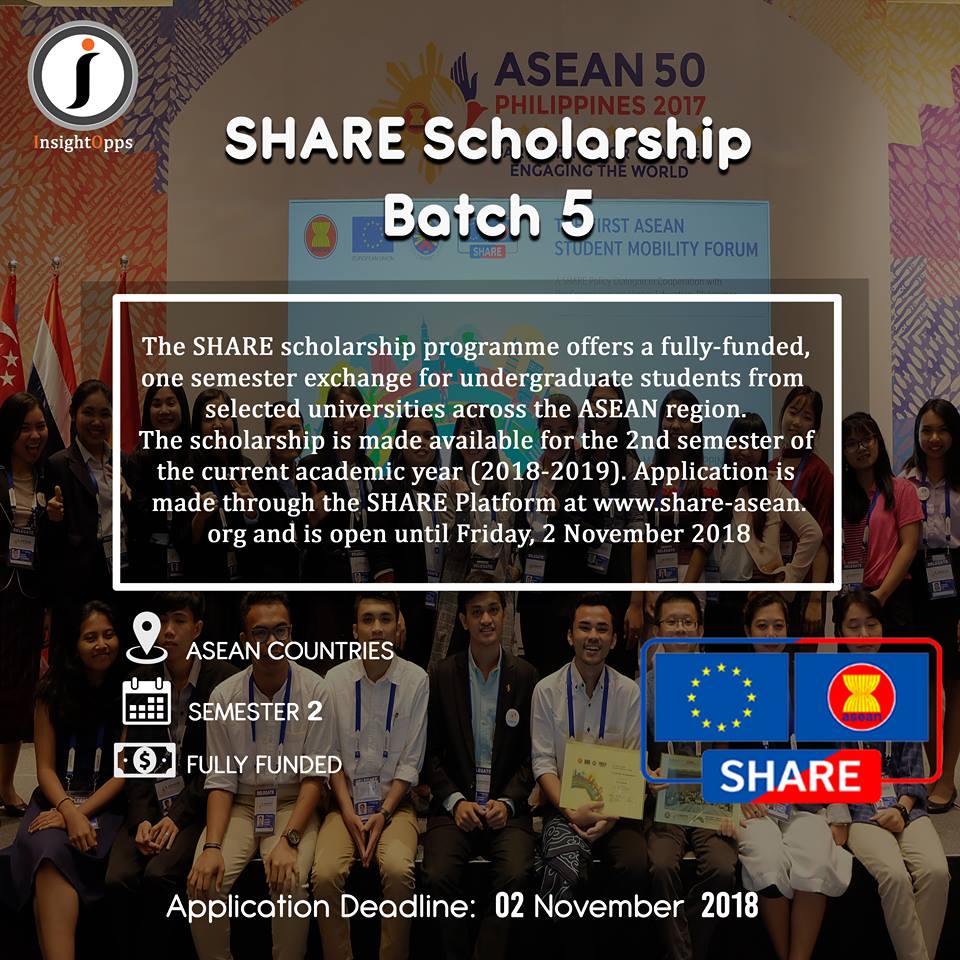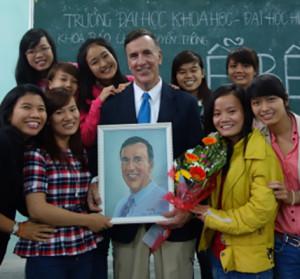|
Student-led media program - the value of experiential learning
(21-06-2017 05:47)
University of Hawaiʻi at Mānoa Student Media Advisor Jay Hartwell spent 10 months in Hue, Vietnam, with a grant through the Fulbright U.S. Core Scholar Program in 2013-2014. Here, he provided journalism workshops for students at University of Sciences, Hue University as well as training for students at universities in Thai Nguyen, Da Nang, and Can Tho and for journalism professionals in Hanoi and Ho Chi Minh City. In June 2017, he came back and gave lectures on social media to journalism students of University of Sciences, Hue University. He also had time to meet with the communications team of Hue University and share his ideas for the development of communications in the university level.
1. Your goal at Hue University in 2013 was to establish a student-led media program that you hoped to be integrated into the university’s curriculum. Did you reach that goal? What did you do for education in journalism during the time you were in Hue? Jay Hartwell: The goal had to be modified because we were unable to add two, new courses (newspaper production and magazine production) to a curriculum already filled with mandatory courses. The compromise was to teach a two-week-long, photo magazine workshop each month to two groups of 15 students. About 180 students, mostly third and fourth year, were able to make time and earned workshop certificates. The best students, about 32, were then selected to provide video, photo and article coverage of the 2014 Hue Festival through a collaboration with the Department and Festival. For most of the participants, the workshops provided their first opportunity to learn and use Photoshop in a deadline, group project that had to meet international standards as interpreted for the students by An Thien HUYNH (Hue University College of Foreign Languages graduate), who assisted me the entire time. The students were smart, worked hard, made corrections, fulfilled their obligations and were a joy for us to work with. During the Festival, my best students were credentialed to cover and file stories about the event as if they were professionals. My hope is that the workshop and Festival experiences showed the students and the faculty the value of experiential learning and that similar, semester-long approaches may someday be incorporated into the curriculum.
Mr. Jay Hartwell with students of University of Sciences, Hue University (http://cmreview.org)
University of Hawaiʻi at Mānoa Student Media Advisor - Jay Hartwell with journalists of Thua Thien Hue Newspaper, June 2017
2. What do you think about the way of teaching journalism at the university level in general and at Department of Journalism and Media Studies, University of Sciences, Hue University? Jay Hartwell: During my 10 months in Vietnam, I was unable to assess how journalism is taught in Hue or any other city because I was conducting workshops independent of the curriculum. There was insufficient time to observe or interact with faculty beyond meetings, dinners and celebrations, such as Teachers Day. However, the faculty are devoted to their students’ development, and the students’ respect for their teachers is inspiring.
3. Could you please tell us some technique that the university in the US use to train for journalism students (equipment, curriculum, percentage of practice and lecture…) Jay Hartwell: In the United States, the students who get jobs after graduation do so because they have combined their academic studies with volunteer, hands-on work as editors, reporters, photographers, designers, videographers in the print and online mediums for student-led media programs that the universities provide for students to acquire experience and share news with the community. Students make all the decisions with advice and training from professionals such as myself. Demonstrated excellence in student media programs (which can be separate from the academic departments teaching journalism) ensures that the student will get a summer internship that can lead to full-time employment after graduation. Students can join these volunteer, university media programs from any department and with no experience. All they need are a desire to learn and persistence. Currently, about a third of my program’s students also are journalism majors. The rest focus their studies on literature, communication, science, engineering, politics. Our School of Communication (which includes journalism) offers lecture and practice courses that focus on journalism fundamentals, ethics and reporting for multiple mediums. Their equipment includes computers, software, still and video cameras, microphones, broadcast studios, which we also offer to students in our volunteer program.
4. How is the future of journalism education when social media develop rapidly? Jay Hartwell: The fundamentals of journalism remain the same: reporting all sides of a story, verification of facts, effective delivery of the story. Social media is another tool to share the story after the reporting, photography, videotaping and writing are finished. The future of journalism education depends on the ability of educators to transfer the fundamentals of good journalism and to teach students how to be flexible in their delivery of that reporting.
5. Talking about communications for the whole university system, could you please share with us your experience as a Student Media Advisor while Hue University and University of Hawaii have a similar management system? Jay Hartwell: A multi-campus management system allows me to collaborate with colleagues from other campuses who serve as advisers to their student media programs. We are able to share resources, combine training and recruitment efforts, and provide students with opportunities to engage with projects beyond each of our campuses. This collaboration is invaluable.
6. Could you please tell us some information about Ka Leo? How do you manage this channel? How do the students involve in the production Ka Leo? Jay Hartwell: Ka Leo (kaleo.org and @kaleoohawaii) is one of four student media programs – each with their own offices – on my campus that is under the ManoaNow.org umbrella. It is governed by the Student Media Board, which is also led by by students. Ka Leo has a print newspaper (twice a month) and website and social media. There is also a 24/7/365 FM radio station that can be heard via radios throughout Honolulu province and around the world online at ktuh.org, a twice-a-year literary journal that also has an online and social media presence (hawaiireview.org) and the UH Productions video unit that does documentary, feature, news and commercial work. All of the programs are organized and led by students with advice from professionals. The budget is provided by a mandatory student fee collected each semester and advertising. Each of these programs operate on multiple mediums (print, online, radio, social). The system, like those at all public universities throughout the United States, operates on legal and educational principles that state: the student voice must be protected from administrative controls so the students alone remain legally responsible for their content and the choices they make. They make mistakes, but in doing so they learn more effectively than if they were told by a teacher what to do or how to do it. My job (besides maintaining the program infrastructure: computers, printing contracts) is to abide by a national code of ethics, provide training, critiques, advices that will help the students make the best choices. But decisions by the Supreme Court of the United States prohibit me from telling them what they must do or report. 7. Do you think that you will have opportunity to come back to Hue University in the near future to continue your ideas during the time you were here? Jay Hartwell: I hope so. Thank you so much.
Ai Huu
Newer News
 Congratulations to 26 graduates of Joint Training Program with Rennes University, France
(01-08-2017 15:12)
Congratulations to 26 graduates of Joint Training Program with Rennes University, France
(01-08-2017 15:12)
 The delegation of Hue University attended the meeting of Mekong Institute Council and Mekong Forum 2017
(25-07-2017 11:40)
The delegation of Hue University attended the meeting of Mekong Institute Council and Mekong Forum 2017
(25-07-2017 11:40)
 Hue University attended ASEA Uninet Pleanary meeting 2017 at Graz University, Austria
(18-07-2017 11:55)
Hue University attended ASEA Uninet Pleanary meeting 2017 at Graz University, Austria
(18-07-2017 11:55)
Older News
 Loei Rajabhat University - Thailand and Hue University to renew cooperation agreement with additional contents
(15-06-2017 05:02)
Loei Rajabhat University - Thailand and Hue University to renew cooperation agreement with additional contents
(15-06-2017 05:02)
 Ceremony to announce and hand the appointment decisions over to management positions of Hue University
(13-06-2017 10:39)
Ceremony to announce and hand the appointment decisions over to management positions of Hue University
(13-06-2017 10:39)
 Kunjang University, Glostar Co, Ltd., and Hue University signed a memorandum of cooperation in the field of mechanics and automobiles.
(13-06-2017 05:43)
Kunjang University, Glostar Co, Ltd., and Hue University signed a memorandum of cooperation in the field of mechanics and automobiles.
(13-06-2017 05:43)
 University of South Australia expressed determination to tighten cooperation in the fields of training and research with Hue University
(12-06-2017 16:42)
University of South Australia expressed determination to tighten cooperation in the fields of training and research with Hue University
(12-06-2017 16:42)
 Welcome international students - ASEAN awardees of the SHARE Scholarship Batch 3 to Hue University
(08-06-2017 09:17)
Welcome international students - ASEAN awardees of the SHARE Scholarship Batch 3 to Hue University
(08-06-2017 09:17)
 Students of University of Sciences, Hue University won two Third Prizes in the 25th National Math Olympiad for Students in 2017
(08-06-2017 06:11)
Students of University of Sciences, Hue University won two Third Prizes in the 25th National Math Olympiad for Students in 2017
(08-06-2017 06:11)
|
News
Last News
Web link
|






